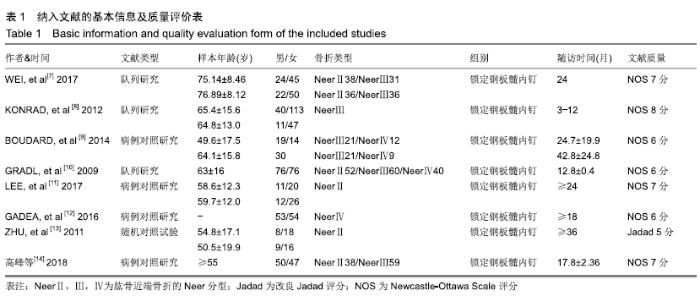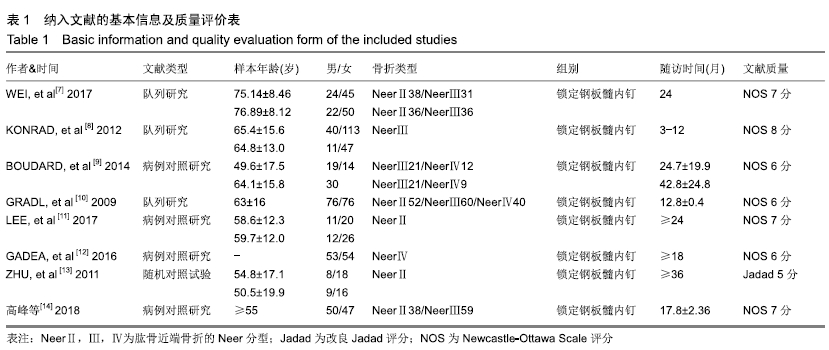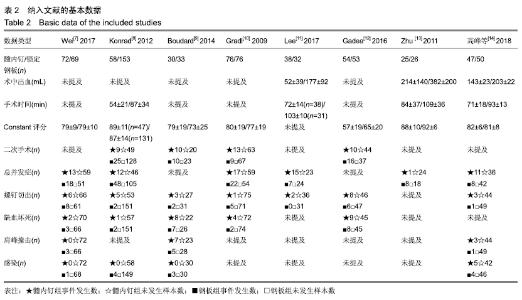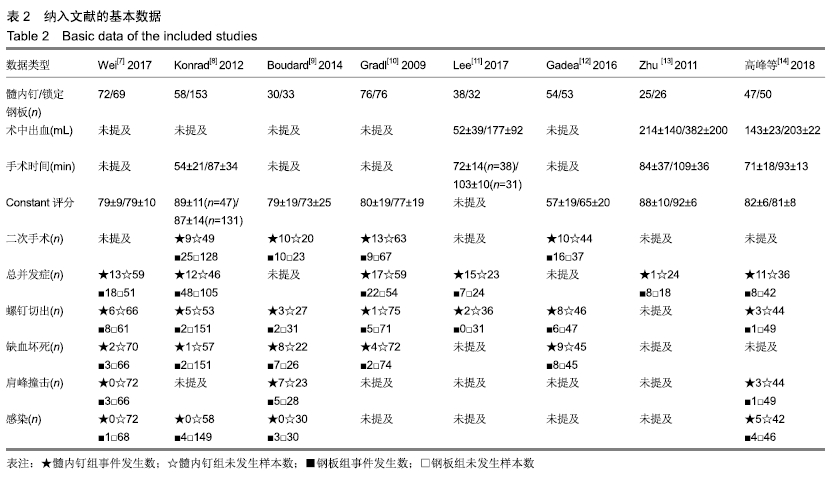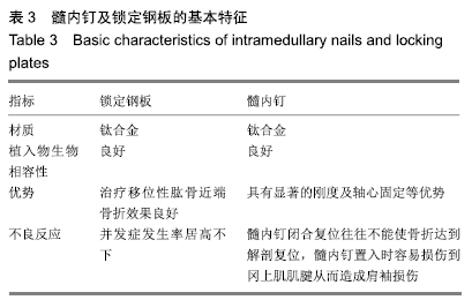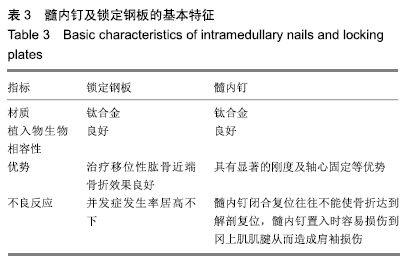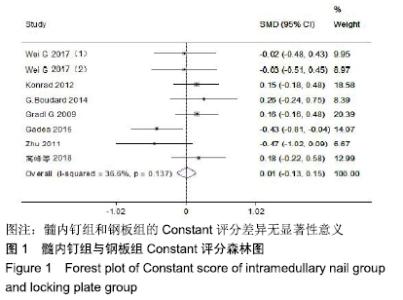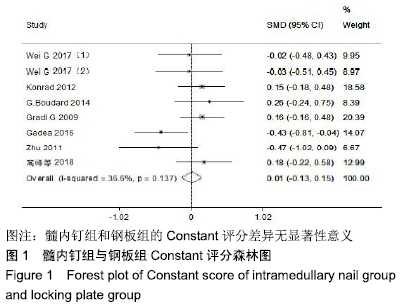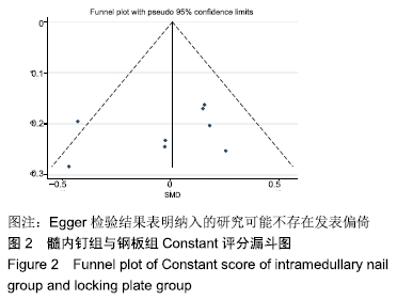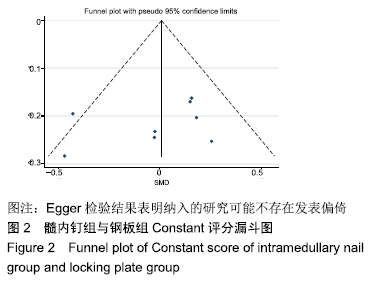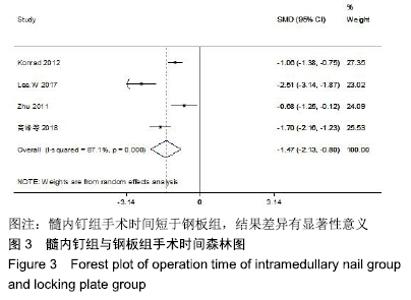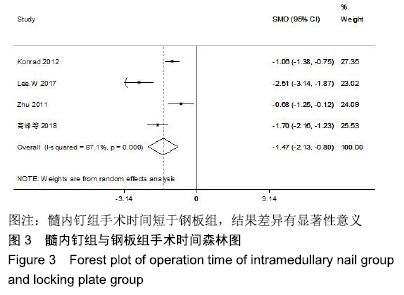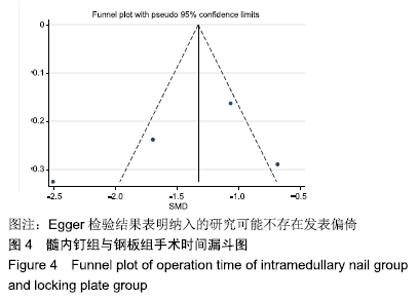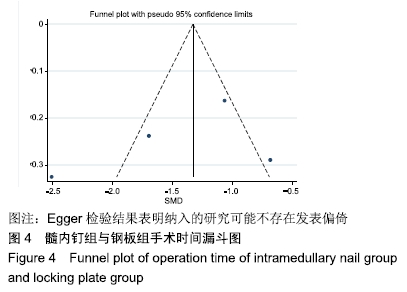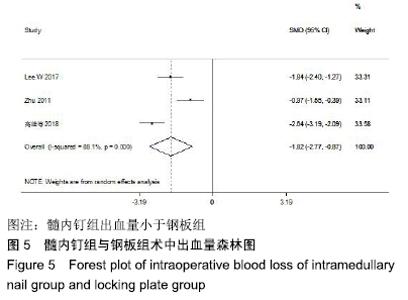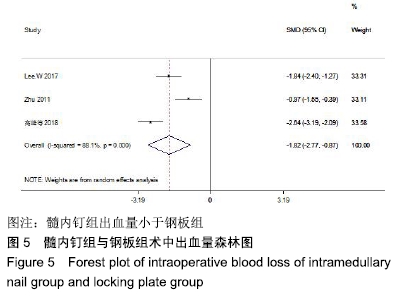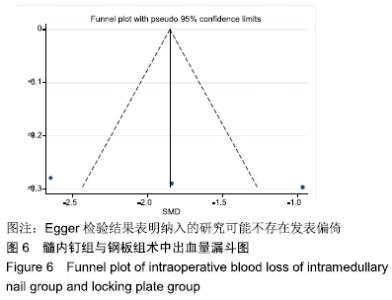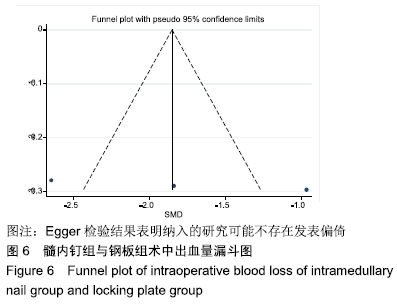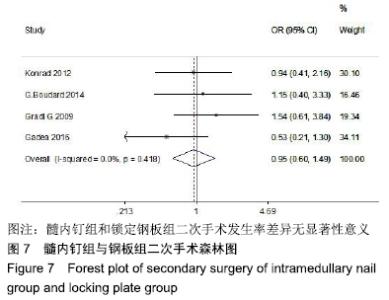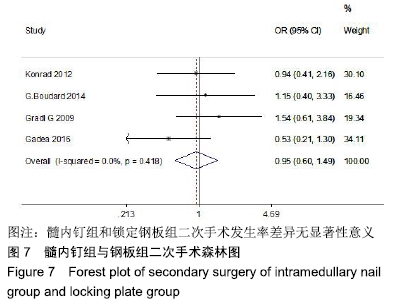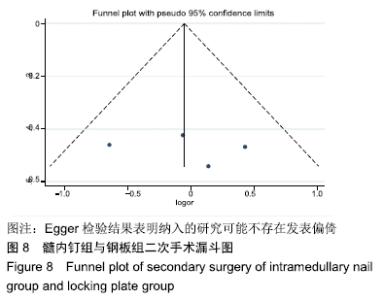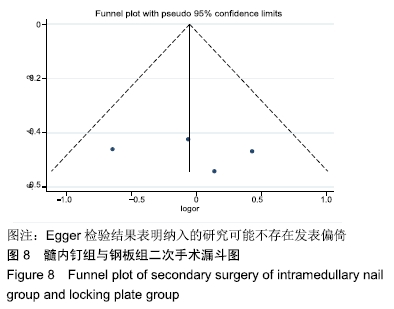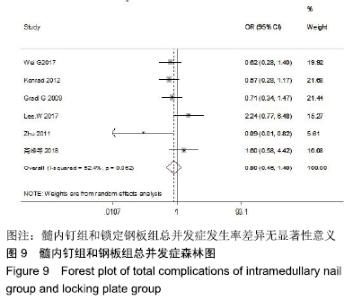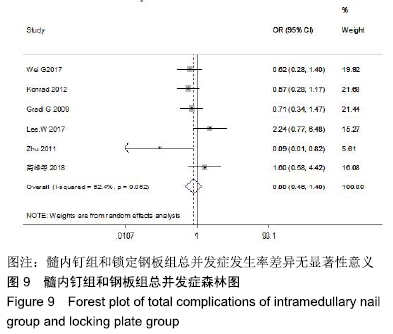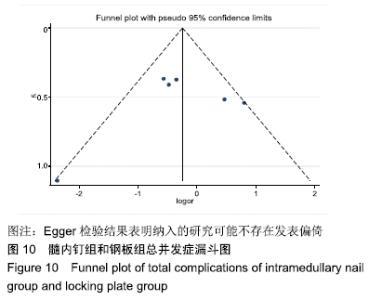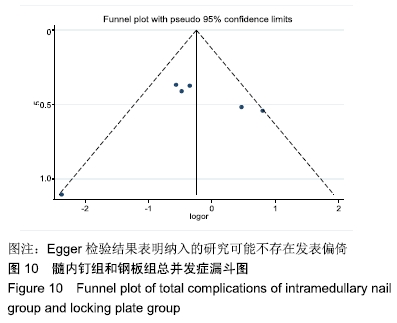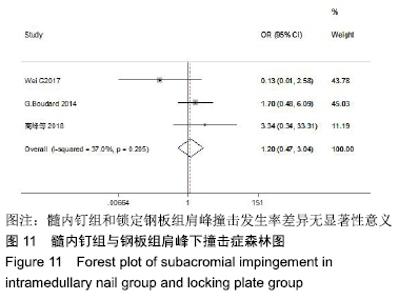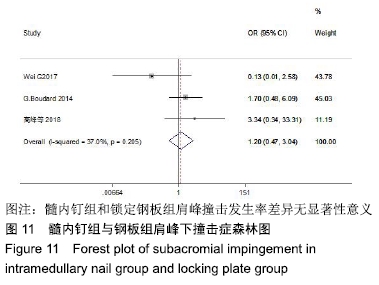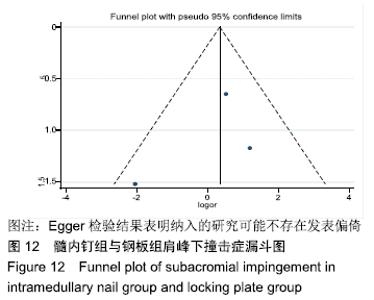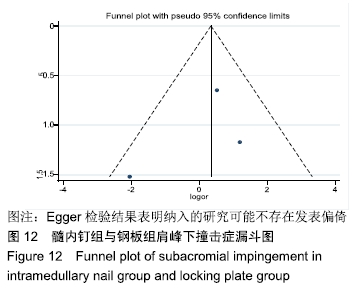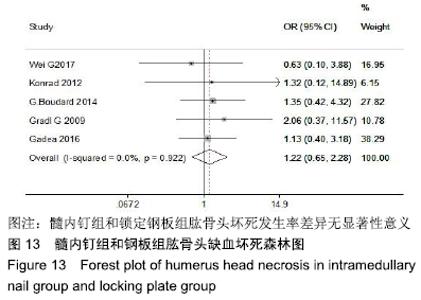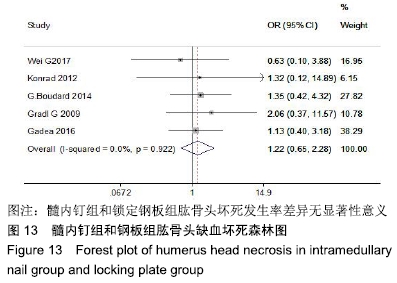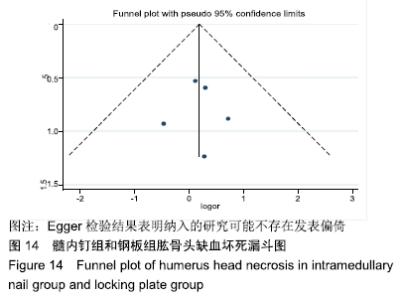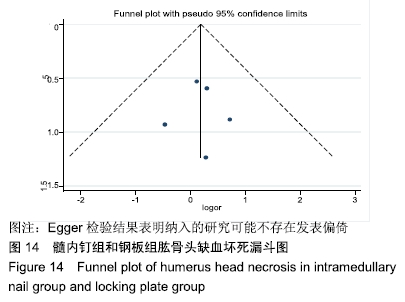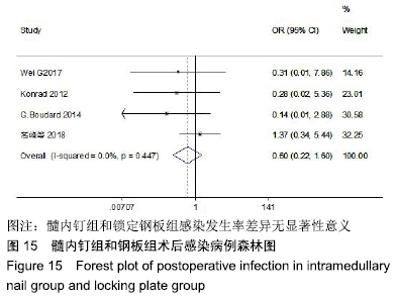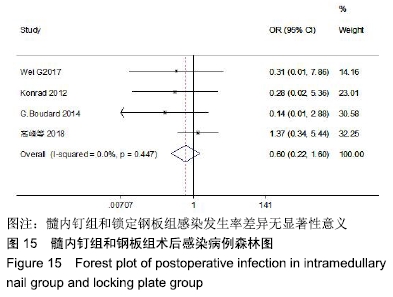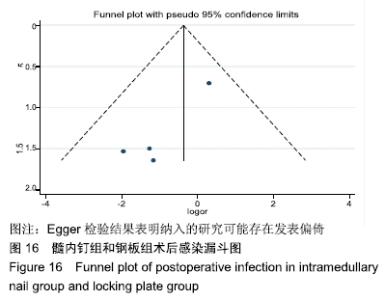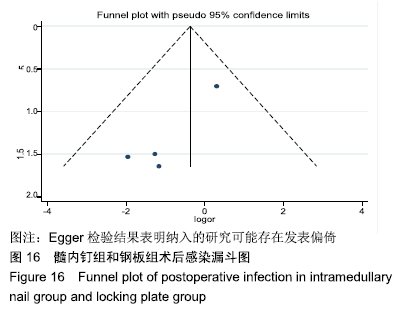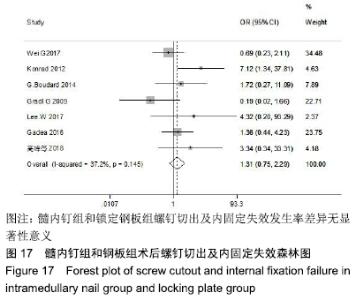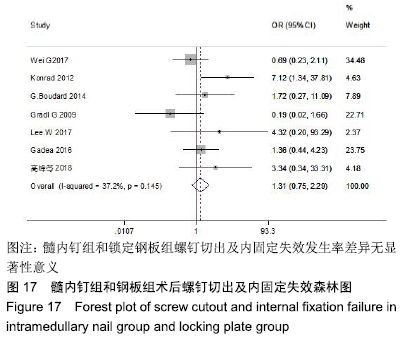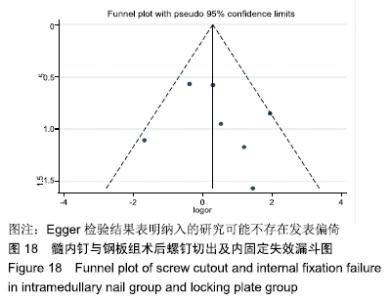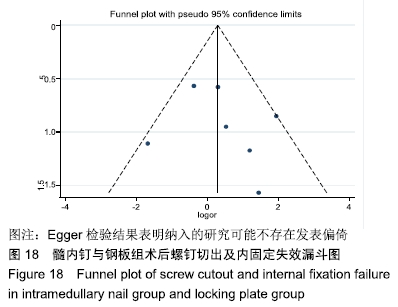Chinese Journal of Tissue Engineering Research ›› 2020, Vol. 24 ›› Issue (6): 938-946.doi: 10.3969/j.issn.2095-4344.2425
Previous Articles Next Articles
Meta-analysis of intramedullary nail and locking plate in the treatment of proximal humeral fractures
Chen Jintao1, Han Shufeng2
- 1Shanxi Medical University, Taiyuan 030001, Shanxi Province, China; 2First Hospital of Shanxi Medical University, Taiyuan 030001, Shanxi Province, China
-
Received:2019-03-21Revised:2019-03-30Accepted:2019-05-08Online:2020-02-28Published:2020-01-18 -
Contact:Han Shufeng, Master, Professor, Master’s supervisor, First Hospital of Shanxi Medical University, Taiyuan 030001, Shanxi Province, China -
About author:Chen Jintao, Master, Shanxi Medical University, Taiyuan 030001, Shanxi Province, China
CLC Number:
Cite this article
Chen Jintao, Han Shufeng. Meta-analysis of intramedullary nail and locking plate in the treatment of proximal humeral fractures[J]. Chinese Journal of Tissue Engineering Research, 2020, 24(6): 938-946.
share this article
Add to citation manager EndNote|Reference Manager|ProCite|BibTeX|RefWorks
| [1] HAK DJ, STAHEL PF, HAK DJ, et al. Ipsilateral femoral neck and shaft fractures: current diagnostic and treatment strategies. Orthopedics. 2015; 38(4):247-251. [2] NEER CS. Displaced proximal humeral fractures. I. Classification and evaluation. J Bone Joint Surg Am.1970;52(6):1077. [3] 江涛,江林,史俊德,等. 正骨手法治疗肱骨近端骨折合并肩关节脱位[J]. 中国骨伤,2018,31(2):175-179. [4] LAUX CJ, GRUBHOFER F, WERNER CML, et al. Current concepts in locking plate fixation of proximal humerus fractures. J Orthop Surg Res. 2017; 12(1):137. [5] SOBEL AD, SHAH KN, PAXTON ES. Fixation of a proximal humerus fracture with an intramedullary nail. J Orthop Trauma. 2017;31 Suppl 3:S47. [6] BRANKO KOPJAR,王簕,杨云峰. 肱骨近端骨折反置式人工全肩关节置换术与人工肱骨头置换术的比较[J].中华创伤骨科杂志, 2012,14(1):61-67. [7] WEI G, QI S, GEN L, et al. Efficacy comparison of intramedullary nails, locking plates and conservative treatment for displaced proximal humeral fractures in the elderly. Clin Int Aging. 2017;12:2047-2054. [8] KONRAD G, AUDIGÉ L, LAMBERT S, et al. Similar Outcomes for Nail versus Plate Fixation of Three-part Proximal Humeral Fracture. Clin Orthop Relat Res. 2012;470(2):602-609. [9] BOUDARD G, POMARES G, MILIN L, et al. Locking plate fixation versus antegrade nailing of 3- and 4-part proximal humerus fractures in patients without osteoporosis. Comparative retrospective study of 63 cases. Orthop Traumatol Surg Res. 2014;100(8):917-924. [10] GRADL G, DIETZE A, KÄÄB M, et al. Is locking nailing of humeral head fractures superior to locking plate fixation? Clin Orthop Relat Res. 2009; 467(11):2986-2993. [11] LEE W, PARK JY, CHUN YM. Operative treatment of 2-part surgical neck fracture of the humerus: intramedullary nail versus locking compression plate with technical consideration.J Orthop Trauma. 2017; 31(9):e270-e274. [12] GADEA F, FAVARD L, BOILEAU P, et al. Fixation of 4-part fractures of the proximal humerus: Can we identify radiological criteria that support locking plates or IM nailing? Comparative, retrospective study of 107 cases. Orthop Traumatol Surg Res. 2016:S1877056816301608. [13] ZHU Y, LU Y, SHEN J, et al. Locking intramedullary nails and locking plates in the treatment of two-part proximal humeral surgical neck fractures: a prospective randomized trial with a minimum of three years of follow-up. J Bone Joint Surg Am. 2011;93(2):159-168. [14] 高峰,王秀会,夏胜利,等. 锁定钢板与髓内钉治疗肱骨近端骨折的比较[J]. 中国矫形外科杂志, 2018,26(12):1068-1073. [15] 黄安全,邹天明.成人肱骨近端骨折治疗进展[J].创伤外科杂志,2016,18(7): 442-446. [16] BRUNNER F, SOMMER C, BAHRS C, et al. Open reduction and internal fixation of proximal humerus fractures using a proximal humeral locked plate: a prospective multicenter analysis. J Orthop Trauma. 2009;23(3):163-172. [17] BRORSON S, RASMUSSEN JV, FRICH LH, et al. Benefits and harms of locking plate osteosynthesis in intraarticular (OTA Type C) fractures of the proximal humerus:A systematic review. Injury.2012;43(7): 999-1005. [18] CLAVERT P, HATZIDAKIS A, BOILEAU P. Anatomical and biomechanical evaluation of an intramedullary nail for fractures of proximal humerus fractures based on tuberosity fixation. Clin Biomech. 2015:S0268003315003290. [19] KANCHERLA VK, SINGH A, ANAKWENZE OA. Management of acute proximal humeral fracture. J Am Acad Orthop Surg. 2017;25(1):42-52. [20] 陈薇,方赛男,陈可冀,等. 国际循证医学证据分级体系的发展与现状[J]. 中国中西医结合杂志, 2017,37(12):1413-1419. [21] GRACITELLI MEC, MALAVOLTA EA, ASSUNÇÃO JH, et al. Locking intramedullary nails versus locking plates for the treatment of proximal humerus fractures. Expert Rev Med Devices. 2017;14(9):733-739. [22] WANG GQ, MAO Z, ZHANG LH, et al. Meta-analysis of locking plate versus intramedullary nail for treatment of proximal humeral fractures. J Orthop Surg Res. 2015;10(1):122. [23] GADEA F, FAVARD L, BOILEAU P, et al. Fixation of 4-part fractures of the proximal humerus: Can we identify radiological criteria that support locking plates or IM nailing? Comparative, retrospective study of 107 cases. Orthop Traumatol Surg Res. 2016:S1877056816301608. [24] ALLENDE C, AGUSTÍN PAZ, ALTUBE G, et al. Revision with plates of humeral nonunions secondary to failed intramedullary nailing. Int Orthop. 2014;38(4):899-903. [25] LIN J, HOU SM. Locked-nail treatment of humeral surgical neck nonunions. J Trauma. 2003;54(3):530-535. [26] 吴其鹏,刘国辉,夏天,等. Multiloc髓内钉治疗肱骨近端二、三部分骨折[J]. 临床骨科杂志, 2017,20(2):251. [27] LIN J. Effectiveness of locked nailing for displaced three-part proximal humeral fractures. J Trauma. 2006;61(2):363-374. [28] KAZAKOS K , LYRAS DN, GALANIS V , et al. Internal fixation of proximal humerus fractures using the Polarus intramedullary nail. Arch Orthop Trauma Surg. 2007;127(7):503-508. [29] CLAVERT P, HATZIDAKIS A, BOILEAU P. Anatomical and biomechanical evaluation of an intramedullary nail for fractures of proximal humerus fractures based on tuberosity fixation. Clin Biomech. 2015:S0268003315003290. [30] BHANDARI M, DEVEREAUX PJ, MCKEE MD, et al. Compression plating versus intramedullary nailing of humeral shaft fractures—a meta-analysis. Acta Orthopaedica. 2006;77(2):279-284. [31] 吴晓明,吴剑宏,王秋根. 肱骨近端骨折髓内钉治疗的老概念与新方法——第三代肱骨近端髓内钉的设计理念和临床实践[J]. 中华创伤骨科杂志, 2015, 17(10):915-920. |
| [1] | Chen Xinmin, Li Wenbiao, Xiong Kaikai, Xiong Xiaoyan, Zheng Liqin, Li Musheng, Zheng Yongze, Lin Ziling. Type A3.3 femoral intertrochanteric fracture with augmented proximal femoral nail anti-rotation in the elderly: finite element analysis of the optimal amount of bone cement [J]. Chinese Journal of Tissue Engineering Research, 2021, 25(9): 1404-1409. |
| [2] | Zhang Shangpu, Ju Xiaodong, Song Hengyi, Dong Zhi, Wang Chen, Sun Guodong. Arthroscopic suture bridge technique with suture anchor in the treatment of acromioclavicular dislocation [J]. Chinese Journal of Tissue Engineering Research, 2021, 25(9): 1417-1422. |
| [3] | Chen Junming, Yue Chen, He Peilin, Zhang Juntao, Sun Moyuan, Liu Youwen. Hip arthroplasty versus proximal femoral nail antirotation for intertrochanteric fractures in older adults: a meta-analysis [J]. Chinese Journal of Tissue Engineering Research, 2021, 25(9): 1452-1457. |
| [4] | Chen Jinping, Li Kui, Chen Qian, Guo Haoran, Zhang Yingbo, Wei Peng. Meta-analysis of the efficacy and safety of tranexamic acid in open spinal surgery [J]. Chinese Journal of Tissue Engineering Research, 2021, 25(9): 1458-1464. |
| [5] | Hu Kai, Qiao Xiaohong, Zhang Yonghong, Wang Dong, Qin Sihe. Treatment of displaced intra-articular calcaneal fractures with cannulated screws and plates: a meta-analysis of 15 randomized controlled trials [J]. Chinese Journal of Tissue Engineering Research, 2021, 25(9): 1465-1470. |
| [6] | Huang Dengcheng, Wang Zhike, Cao Xuewei. Comparison of the short-term efficacy of extracorporeal shock wave therapy for middle-aged and elderly knee osteoarthritis: a meta-analysis [J]. Chinese Journal of Tissue Engineering Research, 2021, 25(9): 1471-1476. |
| [7] | Jiang Hongying, Zhu Liang, Yu Xi, Huang Jing, Xiang Xiaona, Lan Zhengyan, He Hongchen. Effect of platelet-rich plasma on pressure ulcers after spinal cord injury [J]. Chinese Journal of Tissue Engineering Research, 2021, 25(8): 1149-1153. |
| [8] | Wang Yongsheng, Wu Yang, Li Yanchun. Effect of acute high-intensity exercise on appetite hormones in adults: a meta-analysis [J]. Chinese Journal of Tissue Engineering Research, 2021, 25(8): 1305-1312. |
| [9] | Li Cai, Zhao Ting, Tan Ge, Zheng Yulin, Zhang Ruonan, Wu Yan, Tang Junming. Platelet-derived growth factor-BB promotes proliferation, differentiation and migration of skeletal muscle myoblast [J]. Chinese Journal of Tissue Engineering Research, 2021, 25(7): 1050-1055. |
| [10] | Kong Desheng, He Jingjing, Feng Baofeng, Guo Ruiyun, Asiamah Ernest Amponsah, Lü Fei, Zhang Shuhan, Zhang Xiaolin, Ma Jun, Cui Huixian. Efficacy of mesenchymal stem cells in the spinal cord injury of large animal models: a meta-analysis [J]. Chinese Journal of Tissue Engineering Research, 2021, 25(7): 1142-1148. |
| [11] | Xu Yulin, Shen Shi, Zhuo Naiqiang, Yang Huilin, Yang Chao, Li Yang, Zhao Heng, Zhao Lu. Biomechanical comparison of three different plate fixation methods for acetabular posterior column fractures in standing and sitting positions [J]. Chinese Journal of Tissue Engineering Research, 2021, 25(6): 826-830. |
| [12] | He Li, Tian Wei, Xu Song, Zhao Xiaoyu, Miao Jun, Jia Jian. Factors influencing the efficacy of lumbopelvic internal fixation in the treatment of traumatic spinopelvic dissociation [J]. Chinese Journal of Tissue Engineering Research, 2021, 25(6): 884-889. |
| [13] | Yang Weiqiang, Ding Tong, Yang Weike, Jiang Zhengang. Combined variable stress plate internal fixation affects changes of bone histiocyte function and bone mineral density at the fractured end of goat femur [J]. Chinese Journal of Tissue Engineering Research, 2021, 25(6): 890-894. |
| [14] | Zhang Jing, Wang Bin, Lü Xin. Application of anatomic intramedullary nail in tubular bone fractures of limbs: stronger holding force and anti-rotation ability [J]. Chinese Journal of Tissue Engineering Research, 2021, 25(6): 917-922. |
| [15] | Kong Lingbao, Lü Xin. Effect of implant selection and approach on support in the operation of posterolateral tibial plateau fractures [J]. Chinese Journal of Tissue Engineering Research, 2021, 25(6): 942-947. |
| Viewed | ||||||
|
Full text |
|
|||||
|
Abstract |
|
|||||
